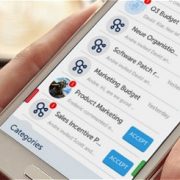Onboarding Checklist for Your New Hires… Ramp Up Successful Employees in Remote/Hybrid Work Settings
The Covid-19 outbreak forced many companies to allow employees to work remotely or through hybrid work models. However, not all employers were prepared to transfer their entire workflow to a virtual setting. As a result, many organizations have struggled with disengaged employees and reduced productivity.
This helpful 7-step onboarding checklist works for fully remote or hybrid working teams.
1. Early Engagement
Making your employees feel included early on before onboarding even starts is one of the best employee engagement strategies for those workers who work at least a part of their time remotely. Get creative with these possibilities:
- Send them a welcome package
- Invite them to the relevant group chat or communication channel
- Organize an informal virtual get together
- Explain the career path and reward system for top performance
- Communicate and keep in touch regularly during early onboarding
2. Secure a Desk Setup In Advance
New employees need the right equipment to start working. These would be things like a PC or a laptop, a high-quality headset, webcam, phone, printer, desk supplies, keyboard, and mouse. Depending on job role and specialization, there might be other equipment and tools they need. If employees are audited and judged based on their performance, remote people need the same tools and working conditions as on-site employees.
3. Tools & Learning Materials
Once you’ve provided the necessary devices and tools, arrange a virtual meeting between your new employee and your IT department or other onboarding person/group. At this point, you have to provide your new hire with the following:
- Login details for their new company email account
- Credentials for any remote tools or software they will use
- Company-wide communication channels and tools
- Calendar access for client appointments or meetings
- Proper training on cyber security
- Digital employee handbooks and learning materials
- Access to cloud storage and documentation
4. Assign a Buddy for Mentorship
New employees will often have many questions but can be too embarrassed or afraid to ask. To make them feel more comfortable, provide one-on-one mentorship with an existing employee who’s willing to show them all the ins and outs of the company. You’ll create a sense of unity and common goals by tying the mentor’s success to the new hire’s performance.
5. Be Transparent
Be clear about work and performance expectations. Provide your new hire with details on how you plan to measure their performance and a list of short and long-term goals of their job role. After going through virtual training, give your new employee straightforward tasks to start with. Always set clear expectations and give reasonable deadlines. At the end of each successful project, schedule some time for re-evaluation and feedback.
6. Don’t Stop Communicating
Making a first impression and establishing personal connections with teammates so that an employee feels included is more challenging to achieve virtually. Since the employees aren’t always there to read your facial cues, you have to open a constant communication line. In remote settings, over-communicating is better than under-communicating. Onboarding shouldn’t be one-way communication, rather a process, where you socialize and engage the new hire. And this is especially vital for workers with a hybrid schedule.
7. Train Managers to Lead Their Hybrid Teams with Flexibility
There is no one-fits-all solution when it comes to flexible schedules, so your managers and leaders need to learn what type of hybrid schedules work best for your business needs and different job roles within an organization. A great manager will differentiate between essential staff that has to be on-site or on a minimally hybrid schedule, and those that can work fully remote. From that point on, the manager needs to be able to rotate and schedule staff shifts accordingly, with employees’ well-being always in mind.
Personalize to give your hybrid onboarding a boost
Tailoring your onboarding process to each job role and allowing your new hires to progress at their own pace can improve their integration and assimilation to the company culture, regardless of how many days they work on- or off-site.
TCI has technology solutions that can support remote and hybrid work arrangements. Contact us today at (703) 321-3030 or info@tcicomm.com.













Leave a Reply
Want to join the discussion?Feel free to contribute!